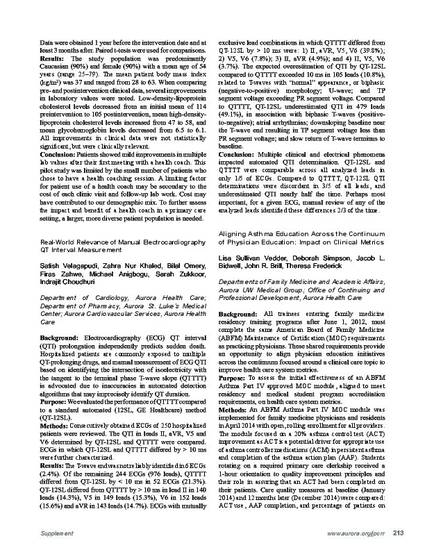
- asthma,
- residency training,
- family medicine
Background: All trainees entering family medicine residency training programs after June 1, 2012, must complete the same American Board of Family Medicine (ABFM) Maintenance of Certification (MOC) requirements as practicing physicians. These shared requirements provide an opportunity to align physician education initiatives across the continuum focused around a clinical care topic to improve health care system metrics.
Purpose: To assess the initial effectiveness of an ABFM Asthma Part IV approved MOC module, aligned to meet residency and medical student program accreditation requirements, on health care system metrics.
Methods: An ABFM Asthma Part IV MOC module was implemented for family medicine physicians and residents in April 2014 with open, rolling enrollment for all providers. The module focused on a 20% asthma control test (ACT) improvement as ACT is a potential driver for appropriate use of asthma controller medications (ACM) in persistent asthma and completion of the asthma action plan (AAP). Students rotating on a required primary care clerkship received a 1-hour orientation to quality improvement principles and their role in assuring that an ACT had been completed on their patients. Care quality measures at baseline (January 2014) and 12 months later (December 2014) were compared: ACT use, AAP completion, and percentage of patients on ACM for two targeted family medicine residency teaching clinics.
Results: Through February 2015, 29 providers systemwide completed the module with 212 in progress. Data from targeted clinics demonstrated system level increases in all metrics over project period, with average increases of 21% in ACT completion, 34% in use of AAP and 7% in ACM use. Participants’ evaluations are strong: 80% of module completers rate MOC training as yielding a high return on their time investment; 100% of M3 students report completing an ACT test and an associated impact on their patient’s care. Participant comments include: “... since completing this project I will strive to screen all my asthma patients at every visit … [and] adjust their medications based on it. [It’s] an extremely useful clinical tool”; and “I plan on trying to use [the] ACT with more appointments as a way to check up on asthma quickly. Score increased to 44% with minimal intervention.”
Conclusion: Aligning physician education opportunities across the continuum with health care system metrics meets board (re)certification requirements, residency and medical student accreditation requirements and improves care for patients.
Available at: http://works.bepress.com/jacob-bidwell/4/
